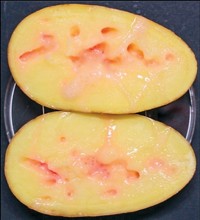Advertisement
Grab your lab coat. Let's get started
Welcome!
Welcome!
Create an account below to get 6 C&EN articles per month, receive newsletters and more - all free.
It seems this is your first time logging in online. Please enter the following information to continue.
As an ACS member you automatically get access to this site. All we need is few more details to create your reading experience.
Not you? Sign in with a different account.
Not you? Sign in with a different account.
ERROR 1
ERROR 1
ERROR 2
ERROR 2
ERROR 2
ERROR 2
ERROR 2
Password and Confirm password must match.
If you have an ACS member number, please enter it here so we can link this account to your membership. (optional)
ERROR 2
ACS values your privacy. By submitting your information, you are gaining access to C&EN and subscribing to our weekly newsletter. We use the information you provide to make your reading experience better, and we will never sell your data to third party members.
Environment
Nitrogen-Fixing For Insects
It’s not just plants and termites that rely on symbiotic nitrogen-fixing bacteria––ants do too
by Sarah Everts
November 23, 2009
| A version of this story appeared in
Volume 87, Issue 47
The abundance of nitrogen in fungus gardens grown by tropical ants is due to nitrogen-fixing bacteria living symbiotically with the insects. This discovery of the essential element’s source solves a conundrum in insect chemical ecology (Science 2009, 326, 1120). The smallest farmers around, leaf-cutter ants play an essential role in nutrient cycling of tropical ecosystems by harvesting hundreds of kilograms of leaves off the forest floor per year and using them as fodder to grow fungus, which the ants use as food. Researchers trying to balance nutrient cycles have long been stumped by the high levels of nitrogen in the fungus gardens, compared with the low amount of nitrogen available from the leaves. Now, researchers led by Cameron R. Currie of the University of Wisconsin, Madison, report that the extra nitrogen comes from the atmosphere, injected by nitrogen-fixing bacteria living in the fungus gardens. Although bacterial nitrogen fixation has long been known to occur in the nodules of legumes, symbiotic relationships between nitrogen-fixing bacteria and insects are rare, with termites being one of the few well-studied examples.





Join the conversation
Contact the reporter
Submit a Letter to the Editor for publication
Engage with us on Twitter